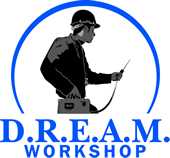2008 Direct-Reading Exposure Assessment Methods (D.R.E.A.M.) Workshop
April 2009
DHHS (NIOSH) Publication Number 2009-133

History of NIOSH D.R.E.A.M. Initiative
The National Institute for Occupational Safety and Health (NIOSH) within the Centers for Disease Control and Prevention, with the support of 12 cosponsors and over 175 participants recently held the Direct-Reading Exposure Assessment Methods (D.R.E.A.M.) Workshop (November 13-14, 2008; Arlington, VA; Hilton Crystal City). The purpose of the workshop was to gather stakeholder input from academia, labor, management, developers, governmental agencies, and manufacturers on the research needs in the area of direct reading methods for assessing occupational exposures. In the morning of the first day, there was a general session attended by all meeting registrants. The general session included a group of plenary state-of-the-art presentations by invited speakers that addressed direct reading exposure assessment methods for workplaces and issues relevant to the broad range of employment sectors and occupational hazards, such as validation, data handling, interpretation, etc. After the general session, there were six concurrent breakout sessions divided by hazard. The occupational hazards were aerosols, gases/vapors, ergonomics, noise, radiation, and surface sampling/biomonitoring. In each break session, the attendees:
- Described the important comprehensive and contemporary information about the state-of-the-art/ state-of-the-science regarding real-time assessment of worker exposure
- Determined if direct-reading methods for their exposure of interest are available
- Identified gaps in the currently-available technology for real-time exposure methods
- Specified agendas for direct-reading method research by occupational agent hazard class
DISCLAIMER: The findings and conclusions in these proceedings are those of the authors and do not necessarily represent the official position of the National Institute for Occupational Safety and Health (NIOSH). Mention of any company or product does not constitute endorsement by NIOSH. In addition, citations to Web sites external to NIOSH do not constitute NIOSH endorsement of the sponsoring organizations or their programs or products. Furthermore, NIOSH is not responsible for the content of these Web sites.
- Page last reviewed: June 6, 2014
- Page last updated: June 6, 2014
- Content source:


 ShareCompartir
ShareCompartir